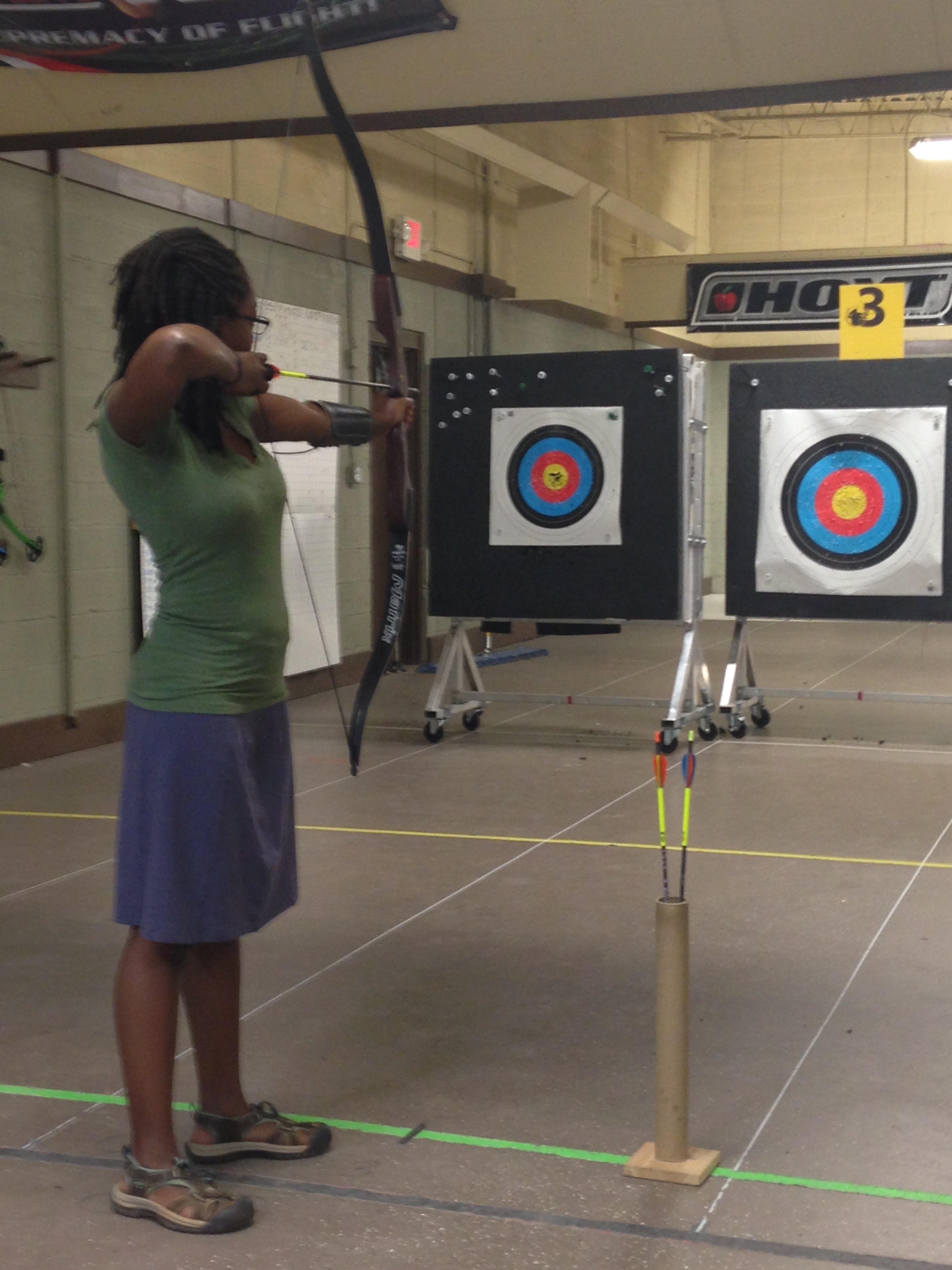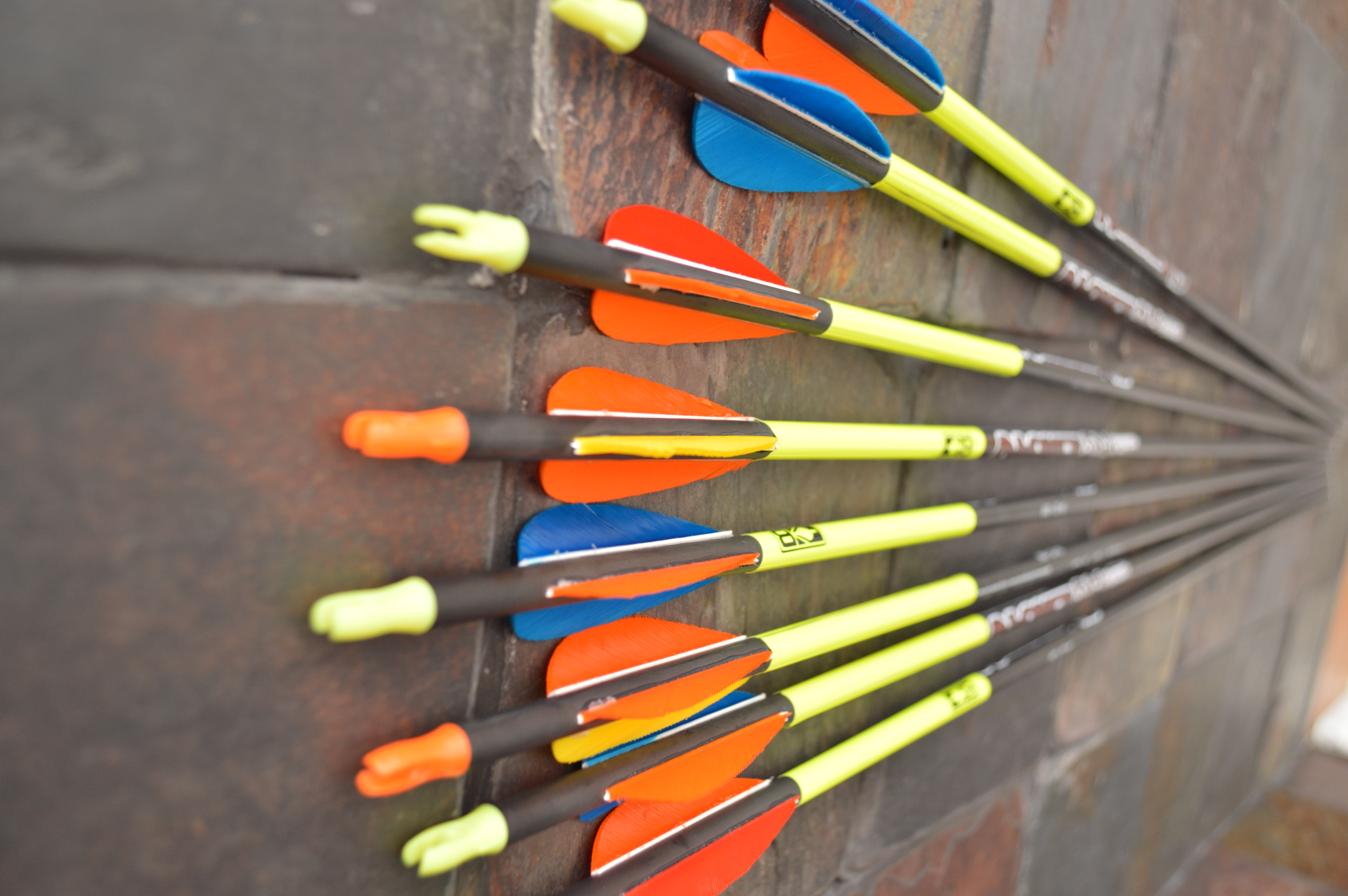 Many beginners wonder how to pick the right arrows for a bow. I’m going to tell you the most mentally efficient method (simple + accurate) for selecting arrows, though there are much more precise methods like what you’ll find here.
Many beginners wonder how to pick the right arrows for a bow. I’m going to tell you the most mentally efficient method (simple + accurate) for selecting arrows, though there are much more precise methods like what you’ll find here.
The absolute easiest option is to walk into an archery supply store with your bow in hand and ask the pros. Let them know your target type, too. Then they can measure you, check out your equipment, and help you find arrows.
But for the self-sufficient types (and those who simply want to understand what they’re doing and why) I’ve done a bit of research that might help.
How to pick arrow length Roughly stated, arrows should be an inch longer than your draw length; when you place the arrow in your bow and draw back, the tip of the arrow should exceed your bow rest by 1″.
If your arrows are too short, they’ll fall off of the backside of your arrow rest when you draw…or worse, if you release without noticing. Longer arrows are better but not too long. Longer arrows have more weight, slowing down your arrow’s speed unnecessarily. Longer arrows are also more flexible which affects your shooting over long distances but that’s not generally a concern for beginners.
So to find the ideal arrow length, you can put any long arrow on the rest, draw fully, and have a friend mark the arrow 1″ from the arrow rest. (You can also do this with a yard stick if you have a simple shelf rest, or any type of thin pole that will fit on your rest and allow you to make a mark.)
How to pick arrow material Carbon and aluminum are the most popular materials on the market. For truly recreational, hobby archers you’ll be just fine with aluminum. Aluminum arrows are heavier but they’re noticeably less expensive and less prone to shattering, which is good for beginners.
 Dedicated archers prefer the more expensive carbon arrows because they’re lighter and they tend to stay straighter, longer. Carbon is less prone to warping than aluminum. Downside is that a damaged or too short carbon arrow can shatter, causing bodily injury. When using carbon, inspect your arrows often and be sure to shoot the proper length and weight.
Dedicated archers prefer the more expensive carbon arrows because they’re lighter and they tend to stay straighter, longer. Carbon is less prone to warping than aluminum. Downside is that a damaged or too short carbon arrow can shatter, causing bodily injury. When using carbon, inspect your arrows often and be sure to shoot the proper length and weight.
How to pick arrow weight Arrows are measured in grains (gr). You’ll want to select arrows that are at a ratio of 5 grains per pound, the measure of your bow’s draw weight.
As a broad generalization, lighter arrows are preferred because they tend to shoot faster and flatter. That’s great for accuracy. Having an arrow that’s too light, however, can have the same ill effects on body and bow as dry-firing. Avoid dropping below the 5 grains per pound ratio.
If you’re hunting game, you may want heavier arrows, up to 9 grains per pound. The weight adds a bit of force needed to penetrate hides and such, loosely the difference between trying to take down a deer with a swift sewing needle or a slower but stronger javelin. Get the idea? For reasons that aren’t entirely clear to me, heavier arrows can also be more silent, which is also beneficial for game hunters.
Game hunters will want to make sure that they’re shooting according to state regulations, which vary from state to state and sometimes season to season. Depending on where you live, these regulations may be more diligently monitored than others. It’s always best to follow state regulations so that you don’t lose your license or face fines and charges.
I’ll have a separate post on fletching and arrow tips coming up soon!
Reblogged this on The Archer is a Girl and commented:
Choosing arrows can be difficult, especially if you’re a beginner. Erica goes beyond the confusing charts and blindingly small grids to explain the basics.